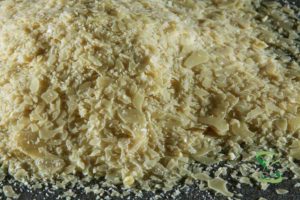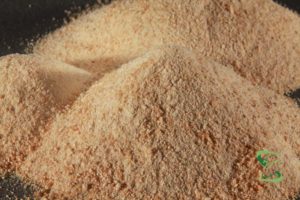
A.F. Suter and Co. Ltd
Shellac, Waxes, Gums and Resins
- +44 (0) 1376 514953
- afsuter@afsuter.com
- Compass House, Eastways Industrial Estate, Witham, Essex, CM8 3YQ, United Kingdom
A.F. Suter and Co. Ltd
Shellac, Waxes, Gums and Resins
Regulation (EC) 1333/2008 (Dec 2008) defines glazing agents (including lubricants) as “substances which, when applied to the external surface of a foodstuff, impart a shiny appearance or provide a protective coating”.
Many glazing agents and edible surface coatings are derived from waxes naturally produced by animals and plants to retain moisture, while others are synthetically derived from petroleum. Some of the main EU approved food glazing agents are listed below according to their E numbers.
| E Number |
Product |
| E901 | Beeswax, white and yellow, produced by honey bees. |
| E902 | Candelilla wax, from the Mexican shrubs Euphorbia cerifera and Euphorbia antisyphilitica. |
| E903 | Carnauba wax, from the leaves of the Carnauba palm, Copernicia cerifera or the Brazilian palm, Copernicia prunifera. |
| E904 | Shellac, a wax-containing resin secreted by the Lac insect Kerria lacca. |
| E905 | Microcrystalline wax, produced by de-oiling Petrolatum. |
Surface coatings are applied as a powder or liquid layer onto a product via mechanical processes such as spraying, mixing or dipping. Having uniformly applied the coating to the product, the coating is stabilised by drying, heating, cooling or freezing, helping to prolong the product’s longevity. Encapsulation involves the application of a liquid layer to minute particles and relies on more processes than mechanical movement alone, such as entrapping a molecule inside a matrix, polymerisation and chemical bonding.
Glazing agents create a glossy, smooth surface coating that provides a protective, moisture resistant barrier. The coating helps to preserve food products by locking-in internal moisture or preventing their degradation due to external humidity, resulting in a prolonged shelf-life. Desirable properties of glazing agents include the stability to maintain their integrity under heat or pressure and their ability to provide a uniform, homogenous coating on an industrial scale.
Surface coatings are used to enhance the aesthetic appeal of food products by improving their lustre or changing their colour. They can also improve the palatability of the products by changing their texture or taste, or by enhancing their flavour. Surface coatings are sometimes used to enrich the product by adding vitamins and minerals. They may also function as release agents to prevent packaging sticking to the products.
The table at the bottom of this page lists some of the main food additives approved by the European Union (EU) for use as glazing agents, including the food categories in which their use is authorised and the maximum levels allowed within those food categories.
Confectionery products are often coated by sugar panning, which involves tumbling products such as nuts, chocolates or jelly beans in a syrup to create a sugary outer shell. Confectioner’s glaze is often used to provide a glossy surface coating for candies.
Surface coatings are used as an excipient to coat tablets and capsules in order to improve their shelf-life. Encapsulation is also used to protect medications and control their release. Historically, pharmaceutical glaze (Shellac in an alcohol solution) was used as an enteric coating, but stability issues impacted the release characteristics and so its use for this purpose has been curtailed.
Waxes are used in lipsticks, lip balms, emollients and other skincare products, providing a glossy surface coating.
A.F. Suter is a leading UK supplier, retailer, wholesaler, distributor, importer and exporter of high quality Shellac, Waxes, Natural Gums, Resins, Menthol Crystals and Zein.
Please click on our Product Finder to search for the products that best meet your requirements in terms of Type, Industry and Application.
| EU Food Category |
E901 – Beeswax, white & yellow |
E902 – Candelilla wax |
E903 – Carnauba wax |
E904 – Shellac |
E905 – Microcrystalline wax |
E414 – Gum Arabic |
| Edible ices (3) |
QS, only prepacked wafers containg ice cream. |
N/A |
N/A |
N/A |
N/A |
N/A |
| Fruit and vegetables (4) | ||||||
| Entire fresh fruit and vegetables (4.1.1) |
QS, only for the surface treatment of fruit: citrus fruit, melons, apples, pears, peaches, pineapples, bananas, mangoes, avocados and pomegranates and as glazing agent on nuts. |
QS, only surface treatment of citrus fruit, melons, apples, pears, peaches and pineapples and glazing agent on nuts. |
ML = 200 mg/kg, only for the surface treatment of fruit: citrus fruit, melons, apples, pears, peaches, pineapples, pomegranates, mangoes, avocados and papayas and as glazing agent on nuts. |
QS, only for the surface treatment of fruit: citrus fruit, melons, apples, pears, peaches, pineapples, pomegranates, mangoes, avocados and papayas and as glazing agent on nuts. |
QS, only for the surface treatment of fruit: melons, papayas, mangoes, avocados and pineapples. |
N/A |
| Confectionery (5) | ||||||
| Cocoa and Chocolate products as covered by Directive 2000/36/EC (5.1) |
QS, as glazing agent only. |
QS, as glazing agent only. |
ML = 500 mg/kg, as glazing agent only. |
QS, as glazing agent only. |
N/A |
QS, as glazing agent only. |
| Other confectionery including breath refreshening microsweets (5.2) |
QS, as glazing agent only. |
QS, as glazing agent only. |
ML = 500 mg/kg, as glazing agent only. |
QS, as glazing agent only. |
QS, surface treatment only. |
N/A |
| Chewing gum (5.3) |
QS, as glazing agent only. |
QS, as glazing agent only. |
ML = 1200 mg/kg, as glazing agent only. |
QS, as glazing agent only. |
QS, surface treatment only. |
N/A |
| Decorations, coatings and fillings, except fruit-based fillings covered by category 4.2.4 (5.4) |
QS, as glazing agent only. |
QS, as glazing agent only. |
ML = 500 mg/kg, as glazing agent only. ML = 200 mg/kg , as glazing agent only for small fine bakery wares, coated with chocolate. |
QS, as glazing agent only. |
QS, surface treatment only. |
N/A |
| Bakery wares (7) | ||||||
| Fine bakery wares (7.2) |
QS, only as glazing agents only for small products of fine bakery wares coated with chocolate. |
QS, only as glazing agents only for small products of fine bakery wares coated with chocolate. |
ML = 200 mg/kg, only as glazing agents only for small products of fine bakery wares coated with chocolate. |
QS, only as glazing agents only for small products of fine bakery wares coated with chocolate. |
N/A |
N/A |
| Eggs and egg products (10) | ||||||
| Processed eggs and egg products (10.2) |
N/A |
N/A |
ML = 3600 mg/kg, only on the surface of unpeeled coloured boiled eggs. |
QS, only on the surface of unpeeled boiled eggs. |
N/A |
N/A |
| Beverages (14) | ||||||
| Coffee, coffee extracts (14.1.5.1) |
QS, only coffee beans, as glazing agent. |
QS, only coffee beans, as glazing agent. |
ML = 200 mg/l, only coffee beans, as glazing agent. |
QS, only coffee beans, as glazing agent. |
N/A |
N/A |
| Ready-to-eat savouries and snacks (15) | ||||||
| Potato-, cereal-, flour- or starch-based snacks (15.1) |
QS, as glazing agent only. |
N/A |
ML = 200 mg/kg, as glazing agents only. |
QS, as glazing agent only. |
N/A |
N/A |
| Processed nuts (15.2) |
QS, as glazing agent only. |
N/A |
ML = 200 mg/kg, as glazing agents only. |
QS, as glazing agent only. |
N/A |
N/A |
| Food supplements, excluding food supplements for infants and young children (17) | ||||||
| Food supplements supplied in a solid form including capsules and tablets and similar forms, excluding chewable forms (17.1) |
QS. |
QS. |
ML = 200 mg/kg. |
QS. |
N/A |
N/A |
| Food supplements supplied in a syrup-type or chewable form (17.3) |
QS. |
QS. |
ML = 200 mg/kg. |
QS. |
N/A |
N/A |
Abbreviations:
ML = Maximum Level
QS = Quantum Satis
N/A = Not Applicable
Showing: products

















Registered Office:
146 New London Road, Chelmsford,
Essex.CM2 0AW
Company Reg No. 04296187
VAT No. GB 783 0308 36